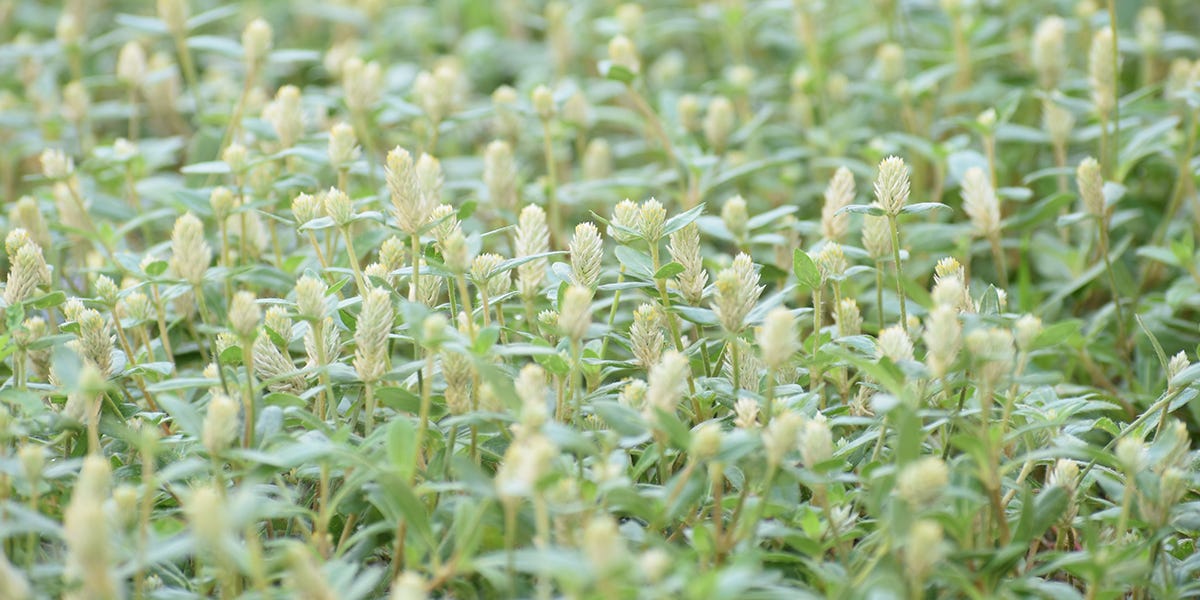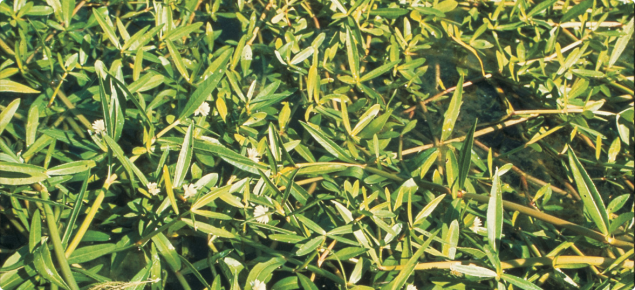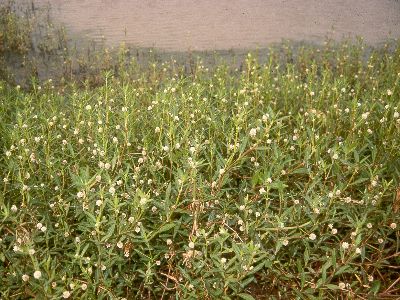To get rid of alligator weed, manually remove it by pulling out the roots. For larger infestations, use herbicides specifically designed for aquatic weeds.
Alligator weed (Alternanthera philoxeroides) is an invasive aquatic plant that disrupts local ecosystems. It grows rapidly, forming dense mats that choke waterways and hinder aquatic life. Identifying alligator weed early is crucial for effective management. This plant can thrive in various environments, from freshwater to brackish waters.
Credit: shop.naturalwaterscapes.com
Left untreated, it can spread quickly, affecting water quality and recreational activities. Homeowners and land managers must take proactive measures to control this weed. Effective removal methods include physical removal and targeted herbicide application. Understanding the best strategies will help preserve local biodiversity and maintain healthy water bodies.
How to Get Rid of Alligator Weed : Step by Step Guide
Introduction To Alligator Weed
Alligator weed is a fast-growing plant that harms the environment. It spreads quickly in water and on land. This weed chokes out other plants and disrupts ecosystems. It can also cause problems for fishing and boating.
Controlling alligator weed is important for many reasons. It protects local wildlife habitats and improves water quality. This weed can block sunlight, harming aquatic life. A healthy ecosystem supports fish, birds, and other animals.
Taking action against alligator weed helps keep our natural spaces clean. It prevents the loss of native plants. Healthy environments are essential for community recreation and tourism.
Identifying Alligator Weed
Alligator weed has several distinct physical characteristics. Its leaves are broad, oval, and bright green. The stems are thick, hollow, and can grow up to 10 feet long. Flowers are small and white, often blooming in clusters.
This weed thrives in common habitats like marshes, ponds, and ditches. It prefers areas with still water and can even grow in wet soil. Alligator weed can spread quickly and outcompete native plants.
Mechanical Control Methods
Hand pulling is a simple way to control Alligator weed. Pull the plants out by the roots. This method works best when the soil is moist. It is important to remove all parts of the plant. Leaving any part can cause it to grow back.
Mowing and cutting can also help manage this weed. Regular mowing prevents the plant from flowering and spreading seeds. Use a sharp mower to cut the weed as low as possible. Make sure to do this before it reaches its full height. This method requires consistent effort for the best results.

Credit: www.solutionsstores.com
Chemical Control Strategies
Choosing the right herbicide is key to controlling alligator weed. Select a product that targets aquatic weeds. Look for glyphosate or imazapyr as effective options. Read the label to ensure safety and effectiveness.
Proper application techniques enhance herbicide effectiveness. Spray during the growing season for best results. Ensure the plant is actively growing before applying. Use a backpack sprayer for small areas or a drone for larger sections.
Always follow local regulations on herbicide use. Wear protective gear like gloves and masks. Avoid spraying on windy days to prevent drift. Timing and method are crucial for successful control.
Biological Control Options
The Alligator weed flea beetle is a small bug. It helps control alligator weed. This beetle feeds on the plant. It reduces its growth and spread. Using these beetles is an effective method.
Other biological agents can also help. For example, certain fungi can infect and kill alligator weed. Bacteria that attack the plant are useful too. These agents work well in wet areas.
Combining different methods can increase success. Using insects, fungi, and bacteria together is smart. This approach can lead to better results in controlling alligator weed.
Cultural Practices For Prevention
Improving water flow helps prevent alligator weed growth. Ensure that water moves freely in your garden or pond. Blocked water causes stagnant areas, promoting weed growth.
Maintaining healthy vegetation is crucial. Strong plants can outcompete alligator weed. Use native plants that grow well in your area. These plants support local wildlife and reduce weed problems.
Regularly trim and remove dead plants. This keeps your garden neat and reduces weed spread. Mulching also helps to cover bare soil and prevent weed seeds from germinating.
Integrated Weed Management
Integrated Weed Management is key to controlling Alligator Weed. Combining different control methods can lead to better results. Here are some effective strategies:
- Cultural Control: Change planting times to disrupt growth.
- Mechanical Control: Regularly cut or pull weeds to weaken them.
- Chemical Control: Use herbicides specifically designed for aquatic weeds.
Monitoring is vital. Check the area regularly to see how well methods work. Adjust strategies based on what you observe. Keeping a close eye helps in deciding what to change. Always be ready to try new ideas if something isn’t working.
Safety And Environmental Considerations
Using herbicides can help control alligator weed. However, safety is very important. Always read the label instructions carefully. Wear protective gear like gloves and masks. Avoid applying herbicides on windy days. This prevents drift to other plants.
Protecting wildlife and water quality is essential. Herbicides can harm fish and other animals. Always keep herbicides away from water sources. Use targeted applications to minimize impact. Choose environmentally friendly options whenever possible. This helps maintain a healthy ecosystem.

Credit: www.agric.wa.gov.au
Frequently Asked Questions
How Can I Identify Alligator Weed?
Alligator weed is a perennial aquatic plant. It has broad, glossy leaves and can grow up to 10 feet long. Look for its distinctive square stems and small white flowers. Often found in stagnant water, its rapid growth can choke out native plants.
Identification is key for effective removal.
What Causes Alligator Weed To Spread?
Alligator weed spreads through vegetative fragmentation and seed dispersal. Water currents can transport fragments, allowing new growth in different areas. Human activities, like gardening or landscaping, can inadvertently spread it as well. Understanding these causes helps in implementing better control measures for this invasive species.
What Are The Best Methods To Remove Alligator Weed?
Effective removal methods include mechanical, chemical, and biological controls. Hand-pulling can work for small infestations, but ensure all roots are removed. Herbicides specifically targeting alligator weed can also be effective. Additionally, introducing natural predators can help manage its growth sustainably.
Always follow local guidelines for chemical use.
Is Alligator Weed Harmful To The Environment?
Yes, alligator weed is harmful to ecosystems. It outcompetes native plants, disrupting local biodiversity. Its dense mats can block sunlight and reduce oxygen in the water, harming aquatic life. This invasive species can also affect water flow and quality, impacting recreational activities and local economies.
Conclusion
Alligator weed can be a persistent problem for many gardeners. Effective management involves consistent monitoring and targeted removal methods. Implementing preventive measures will help keep this invasive plant at bay. By following the strategies outlined in this guide, you can restore balance to your garden and promote healthy growth for your desired plants.

